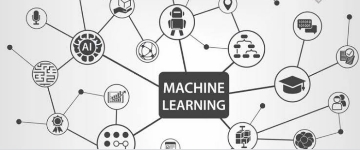Overview
Machine learning (ML) is a field of inquiry devoted to understanding and building methods that 'learn', that is, methods that leverage data to improve performance on some set of tasks They can be nuanced, such as "X% of families have geographically separate species with color variants, so there is a Y% chance that undiscovered black swans exist". Machine learning programs can perform tasks without being explicitly programmed to do so. It involves computers learning from data provided so that they carry out certain tasks. For simple tasks assigned to computers, it is possible to program algorithms telling the machine how to execute all steps required to solve the problem at hand; on the computer's part, no learning is needed. For more advanced tasks, it can be challenging for a human to manually create the needed algorithms. In practice, it can turn out to be more effective to help the machine develop its own algorithm, rather than having human programmers specify every needed step
Artificial intelligence
As a scientific endeavor, machine learning grew out of the quest for artificial intelligence. In the early days of AI as an academic discipline, some researchers were interested in having machines learn from data. They attempted to approach the problem with various symbolic methods, as well as what was then termed "neural networks"; these were mostly perceptrons and other models that were later found to be reinventions of the generalized linear models of statistics. Probabilistic reasoning was also employed, especially in automated medical diagnosis. However, an increasing emphasis on the logical, knowledge-based approach caused a rift between AI and machine learning. Probabilistic systems were plagued by theoretical and practical problems of data acquisition and representation. expert systems had come to dominate AI, and statistics was out of favor. Work on symbolic/knowledge-based learning did continue within AI, leading to inductive logic programming, but the more statistical line of research was now outside the field of AI proper, in pattern recognition and information retrieval.[26]: 708–710, 755 Neural networks research had been abandoned by AI and computer science around the same time. This line, too, was continued outside the AI/CS field, as "connectionism", by researchers from other disciplines including Hopfield, Rumelhart, and Hinton. Their main success came in the mid-1980s with the reinvention of backpropagation.
Basic info
Machine learning (ML) is a field of inquiry devoted to understanding and building methods that 'learn', that is, methods that leverage data to improve performance on some set of tasks.[1] It is seen as a part of artificial intelligence. Machine learning algorithms build a model based on sample data, known as training data, in order to make predictions or decisions without being explicitly programmed to do so.[2] Machine learning algorithms are used in a wide variety of applications, such as in medicine, email filtering, speech recognition, agriculture, and computer vision, where it is difficult or unfeasible to develop conventional algorithms to perform the needed tasks.[3][4] A subset of machine learning is closely related to computational statistics, which focuses on making predictions using computers, but not all machine learning is statistical learning. The study of mathematical optimization delivers methods, theory and application domains to the field of machine learning. Data mining is a related field of study, focusing on exploratory data analysis through unsupervised learning. Some implementations of machine learning use data and neural networks in a way that mimics the working of a biological brain. In its application across business problems, machine learning is also referred to as predictive analytics.
Neural Network -->

